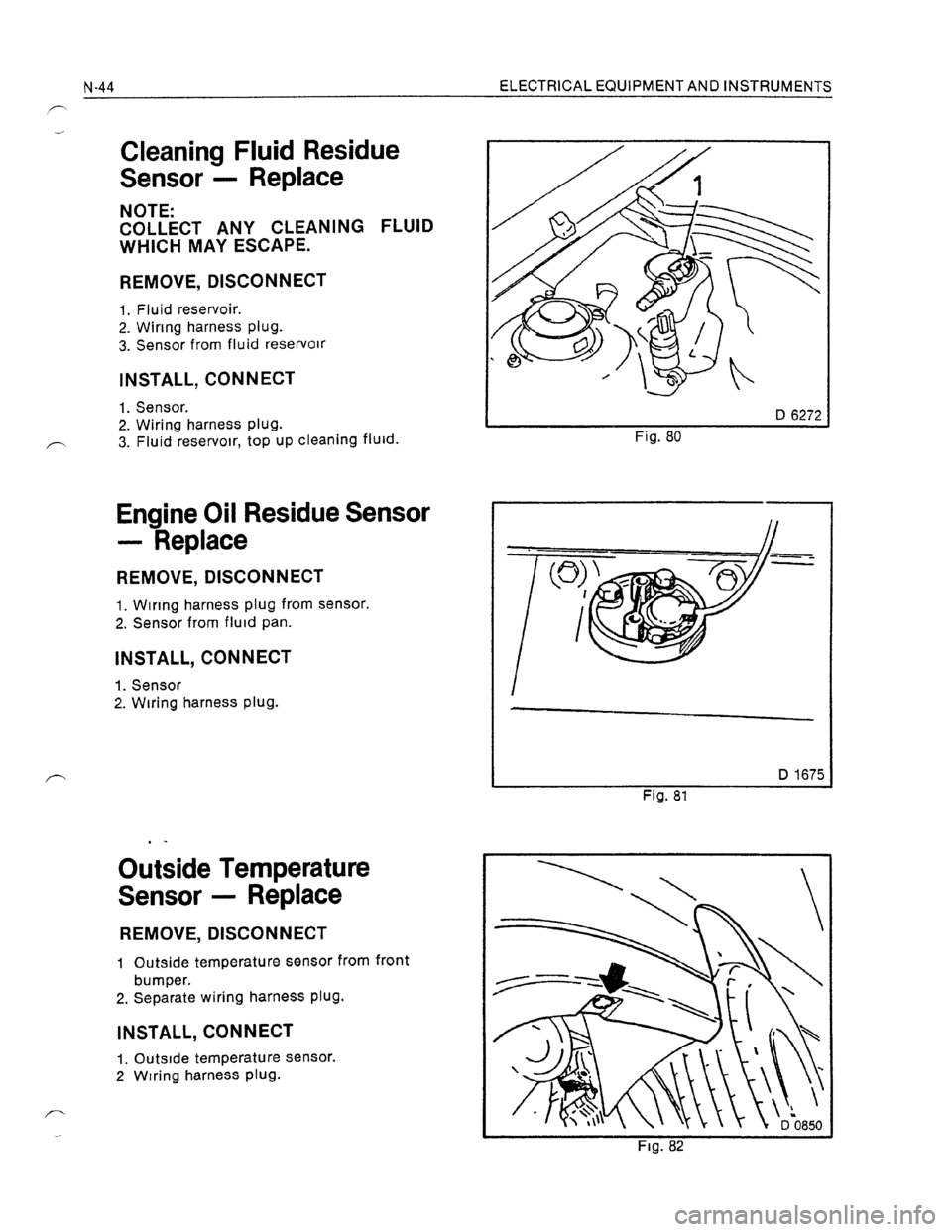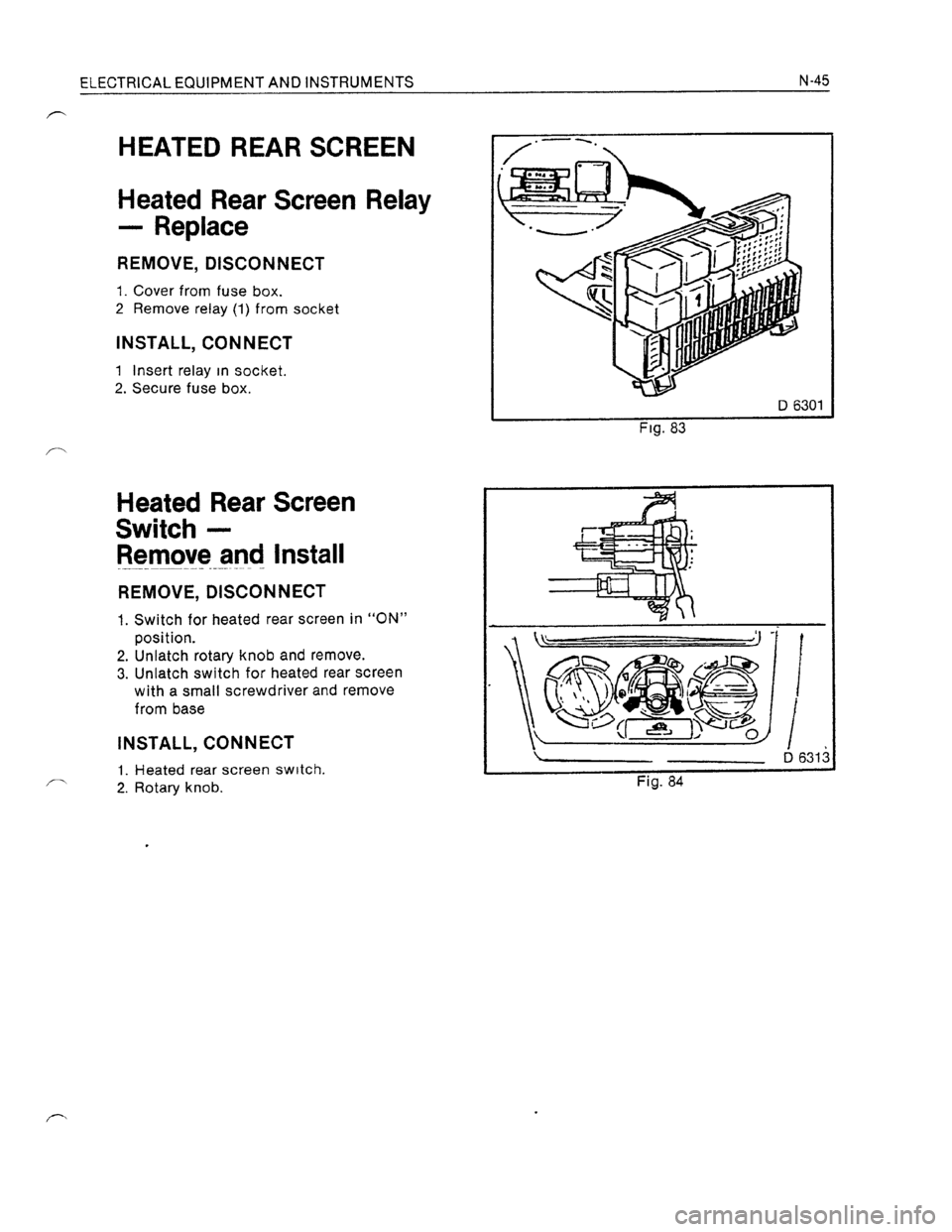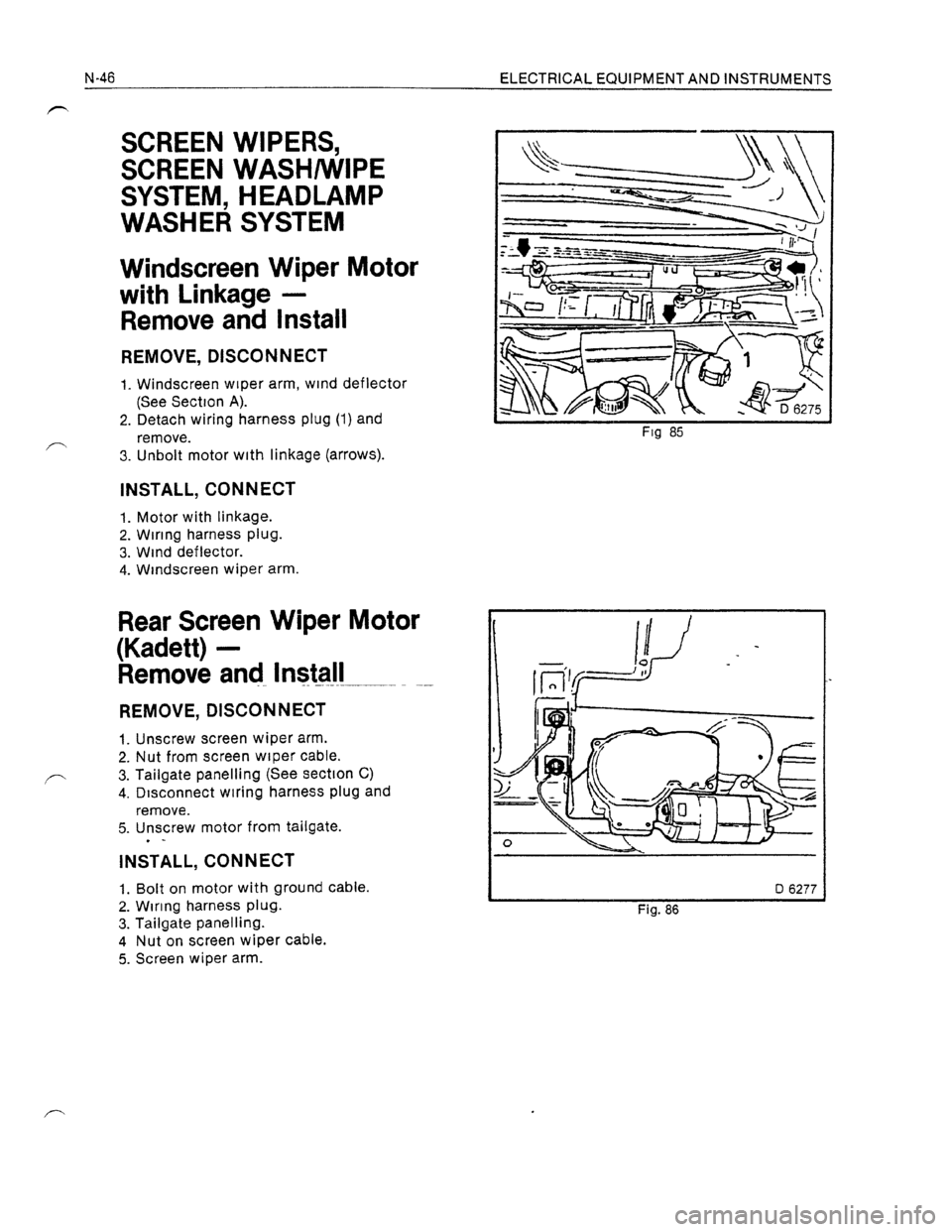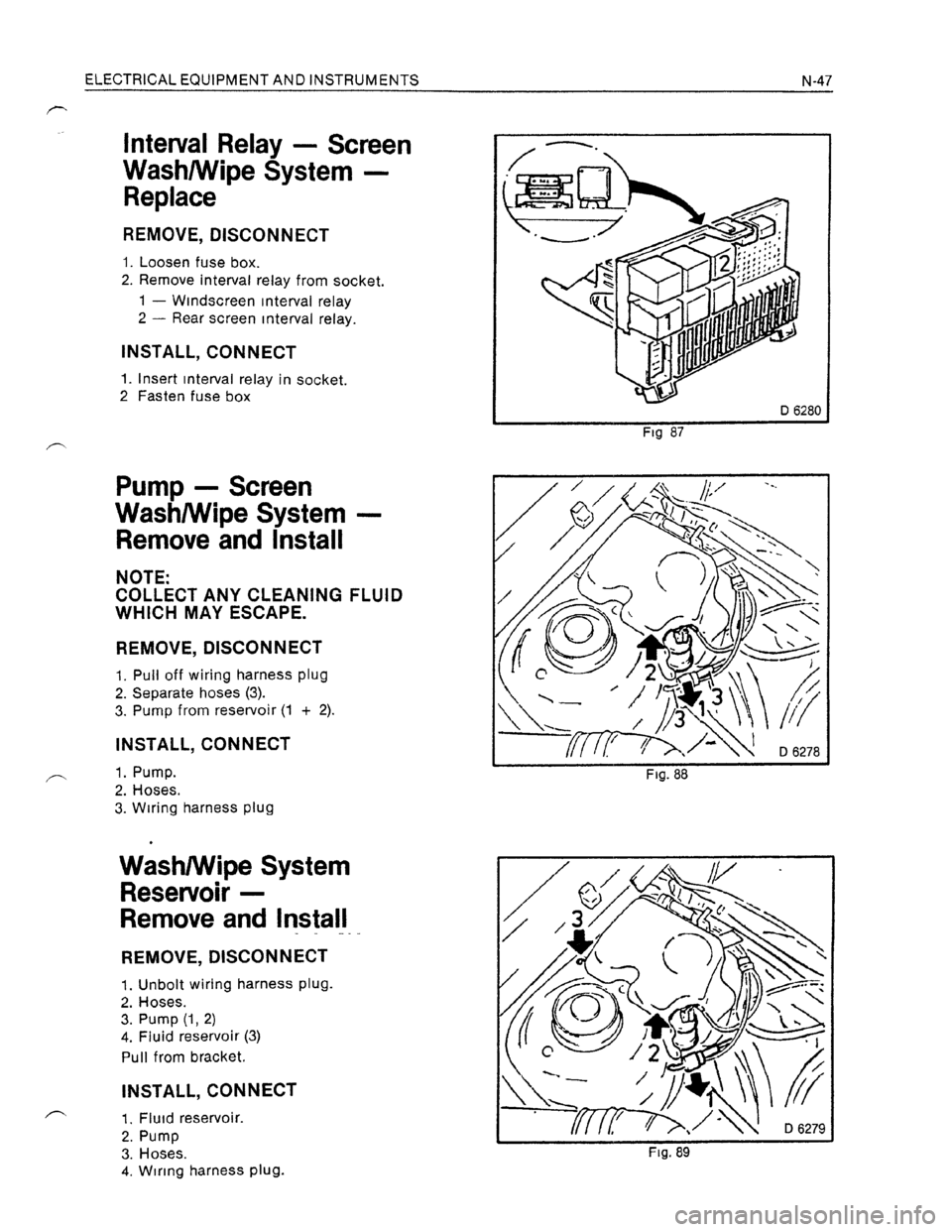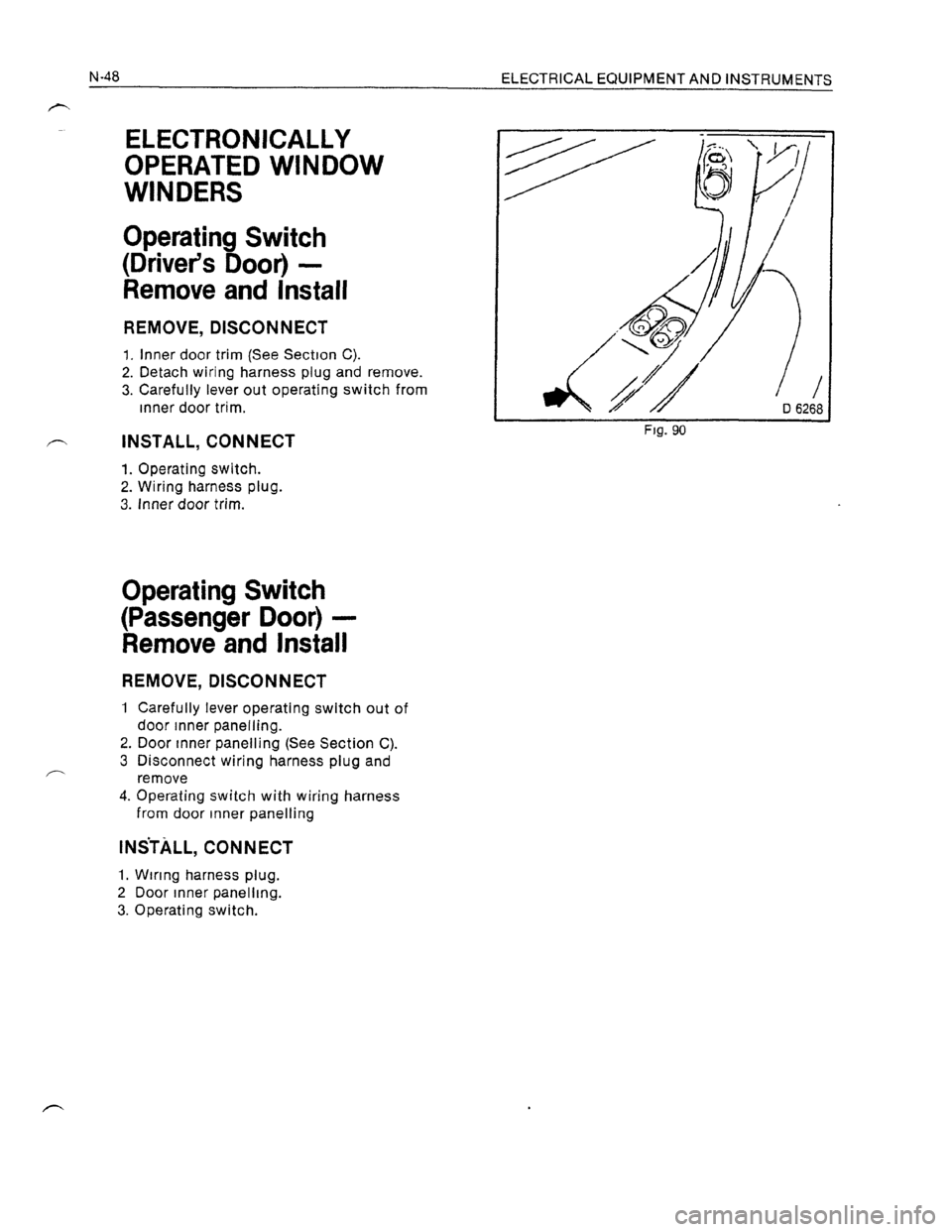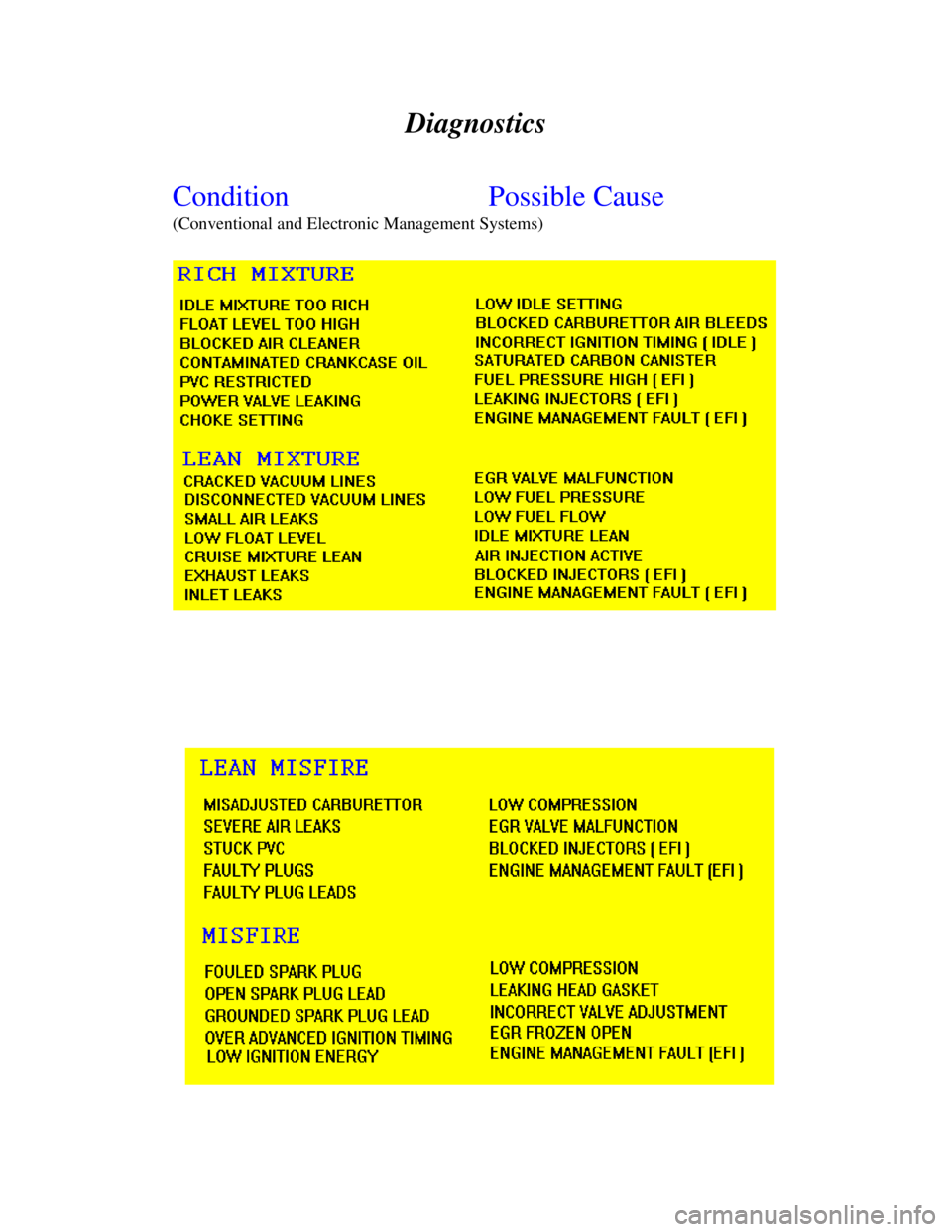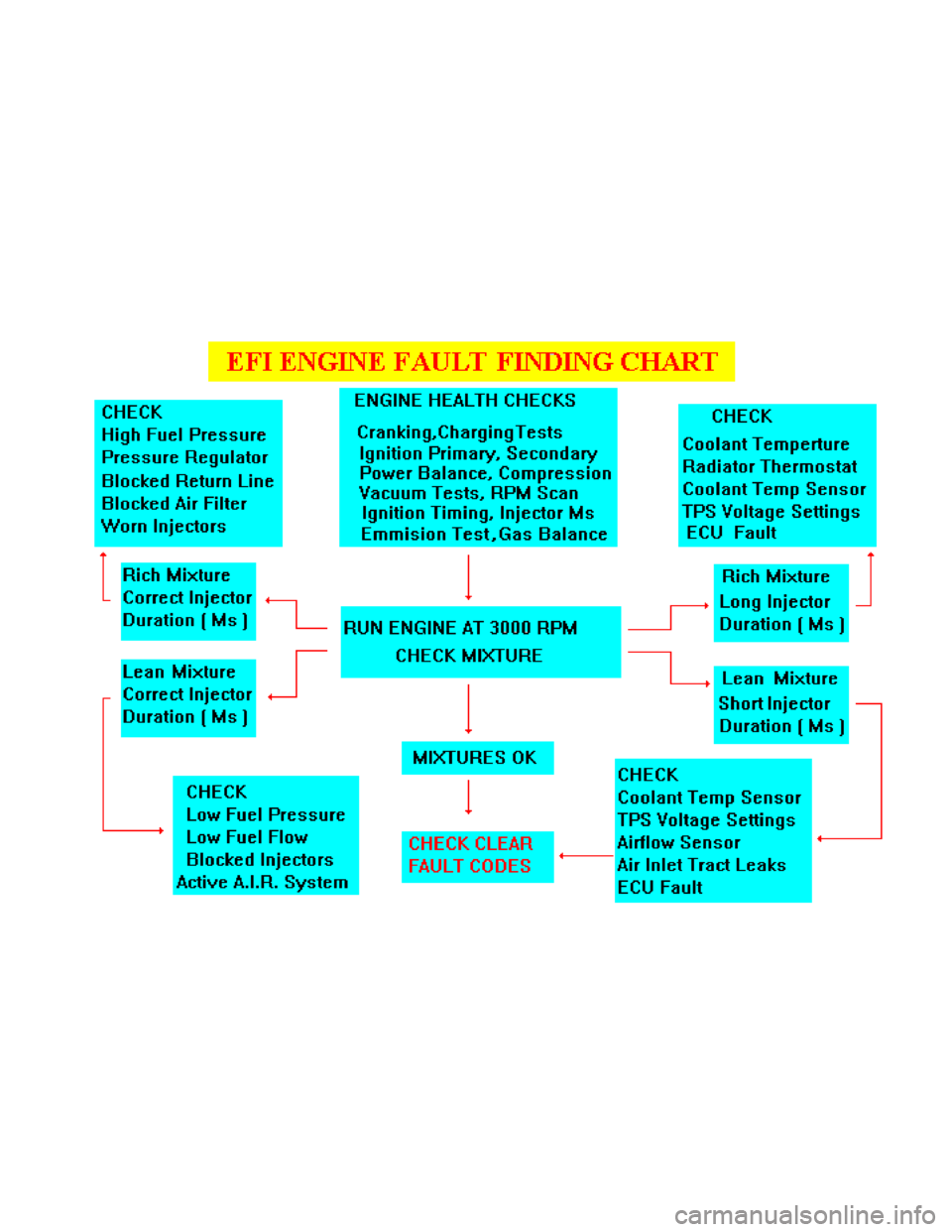OPEL KADETT 1991 Electronic Workshop Manual
Manufacturer: OPEL, Model Year: 1991,
Model line: KADETT,
Model: OPEL KADETT 1991
Pages: 1070, PDF Size: 41.39 MB
OPEL KADETT 1991 Electronic Workshop Manual
KADETT 1991
OPEL
OPEL
https://www.carmanualsonline.info/img/37/57411/w960_57411-0.png
OPEL KADETT 1991 Electronic Workshop Manual
Trending: water pump, electrical, run flat, electric, low oil pressure, ECU, ECO mode
Page 1021 of 1070
Downloaded from www.Manualslib.com manuals search engine
Page 1022 of 1070
Downloaded from www.Manualslib.com manuals search engine
Page 1023 of 1070
Downloaded from www.Manualslib.com manuals search engine
Page 1024 of 1070
Downloaded from www.Manualslib.com manuals search engine
Page 1025 of 1070
Downloaded from www.Manualslib.com manuals search engine
Page 1026 of 1070
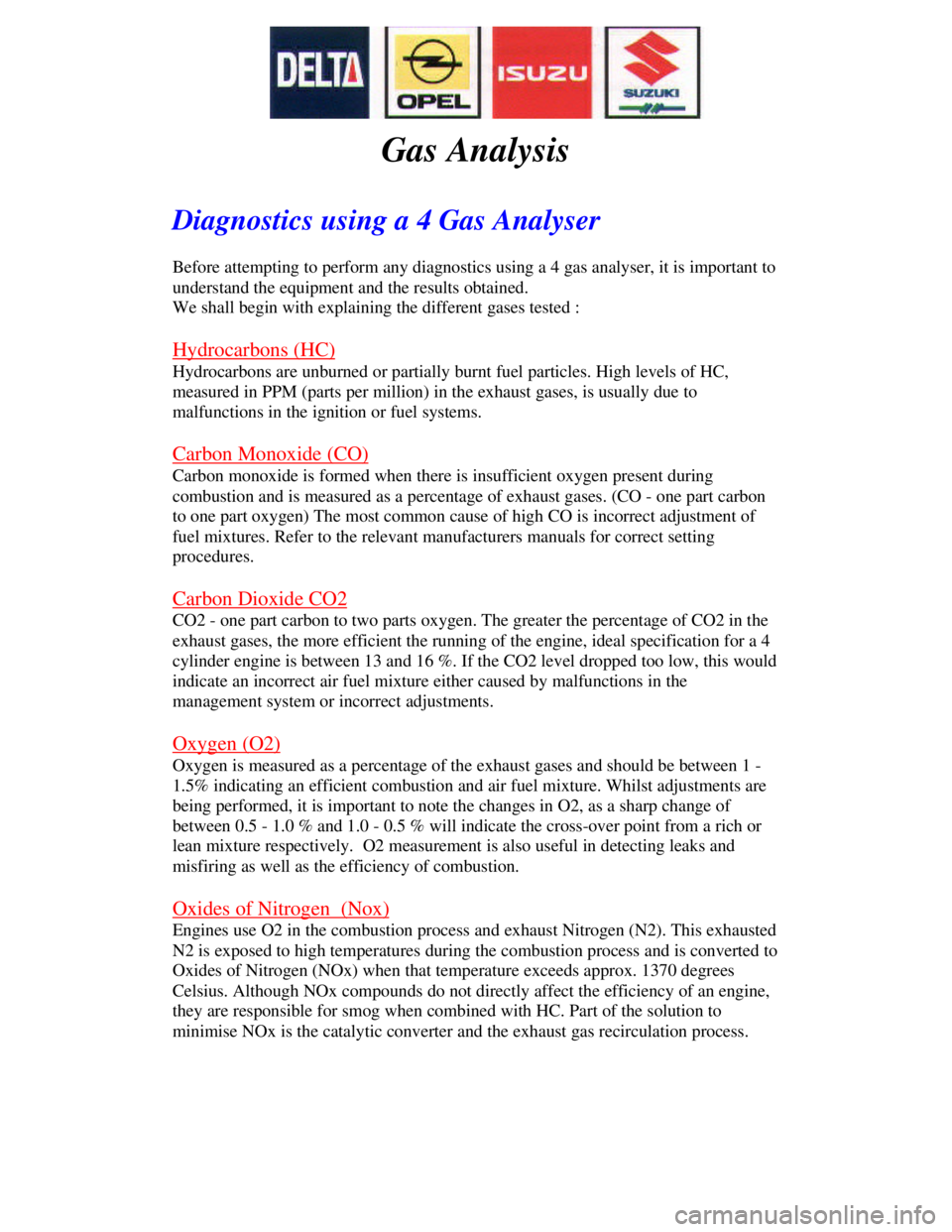
Downloaded from www.Manualslib.com manuals search engine Gas Analysis
Diagnostics using a 4 Gas Analyser
Before attempting to perform any diagnostics using a 4 gas analyser, it is important to
understand the equipment and the results obtained.
We shall begin with explaining the different gases tested :
Hydrocarbons (HC)Hydrocarbons are unburned or partially burnt fuel particles. High levels of HC,
measured in PPM (parts per million) in the exhaust gases, is usually due to
malfunctions in the ignition or fuel systems.
Carbon Monoxide (CO)Carbon monoxide is formed when there is insufficient oxygen present during
combustion and is measured as a percentage of exhaust gases. (CO - one part carbon
to one part oxygen) The most common cause of high CO is incorrect adjustment of
fuel mixtures. Refer to the relevant manufacturers manuals for correct setting
procedures.
Carbon Dioxide CO2CO2 - one part carbon to two parts oxygen. The greater the percentage of CO2 in the
exhaust gases, the more efficient the running of the engine, ideal specification for a 4
cylinder engine is between 13 and 16 %. If the CO2 level dropped too low, this would
indicate an incorrect air fuel mixture either caused by malfunctions in the
management system or incorrect adjustments.
Oxygen (O2)Oxygen is measured as a percentage of the exhaust gases and should be between 1 -
1.5% indicating an efficient combustion and air fuel mixture. Whilst adjustments are
being performed, it is important to note the changes in O2, as a sharp change of
between 0.5 - 1.0 % and 1.0 - 0.5 % will indicate the cross-over point from a rich or
lean mixture respectively. O2 measurement is also useful in detecting leaks and
misfiring as well as the efficiency of combustion.
Oxides of Nitrogen (Nox)Engines use O2 in the combustion process and exhaust Nitrogen (N2). This exhausted
N2 is exposed to high temperatures during the combustion process and is converted to
Oxides of Nitrogen (NOx) when that temperature exceeds approx. 1370 degrees
Celsius. Although NOx compounds do not directly affect the efficiency of an engine,
they are responsible for smog when combined with HC. Part of the solution to
minimise NOx is the catalytic converter and the exhaust gas recirculation process.
Page 1027 of 1070
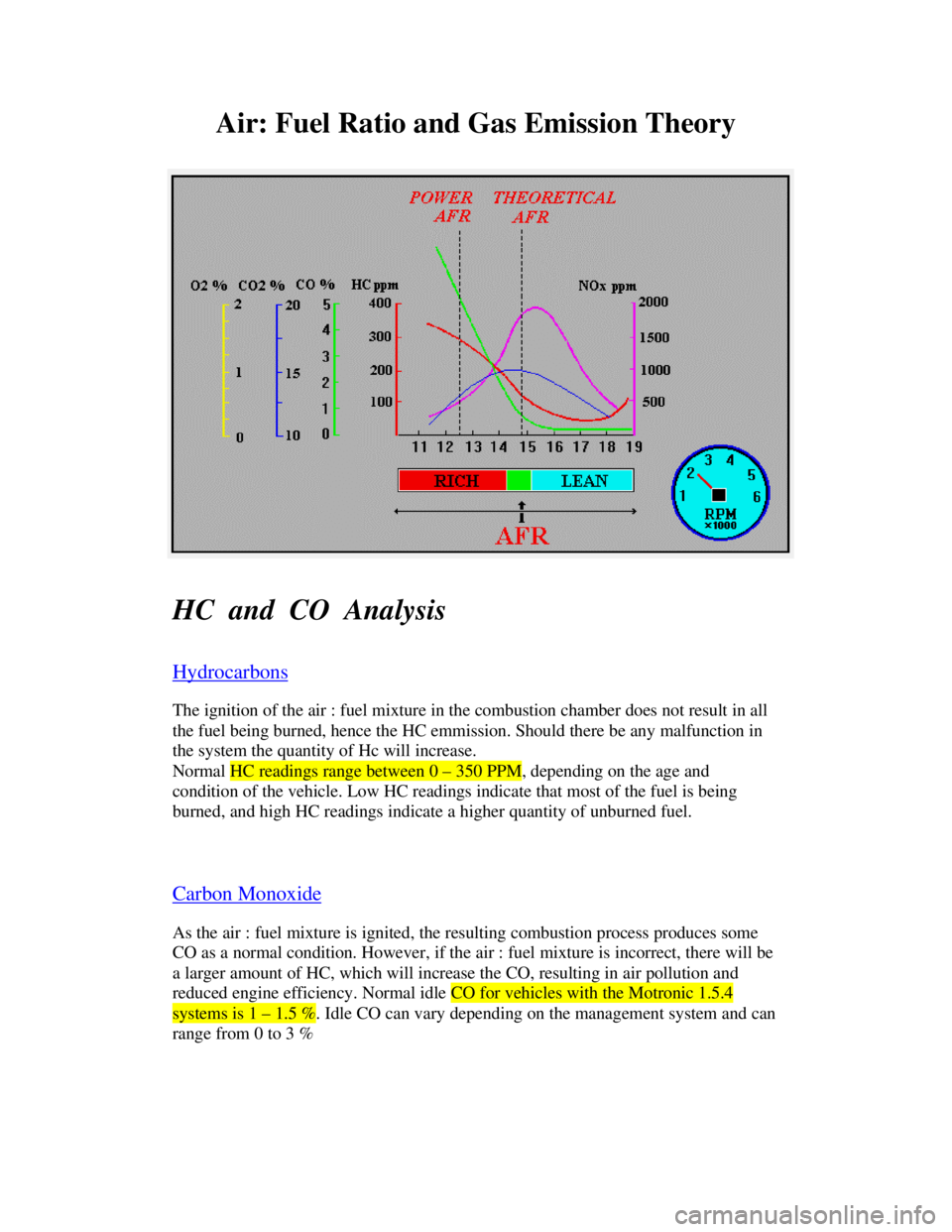
Downloaded from www.Manualslib.com manuals search engine Air: Fuel Ratio and Gas Emission Theory
HC and CO Analysis
HydrocarbonsThe ignition of the air : fuel mixture in the combustion chamber does not result in all
the fuel being burned, hence the HC emmission. Should there be any malfunction in
the system the quantity of Hc will increase.
Normal HC readings range between 0 – 350 PPM, depending on the age and
condition of the vehicle. Low HC readings indicate that most of the fuel is being
burned, and high HC readings indicate a higher quantity of unburned fuel.
Carbon MonoxideAs the air : fuel mixture is ignited, the resulting combustion process produces some
CO as a normal condition. However, if the air : fuel mixture is incorrect, there will be
a larger amount of HC, which will increase the CO, resulting in air pollution and
reduced engine efficiency. Normal idle CO for vehicles with the Motronic 1.5.4systems is 1 – 1.5 %. Idle CO can vary depending on the management system and can
range from 0 to 3 %
Page 1028 of 1070
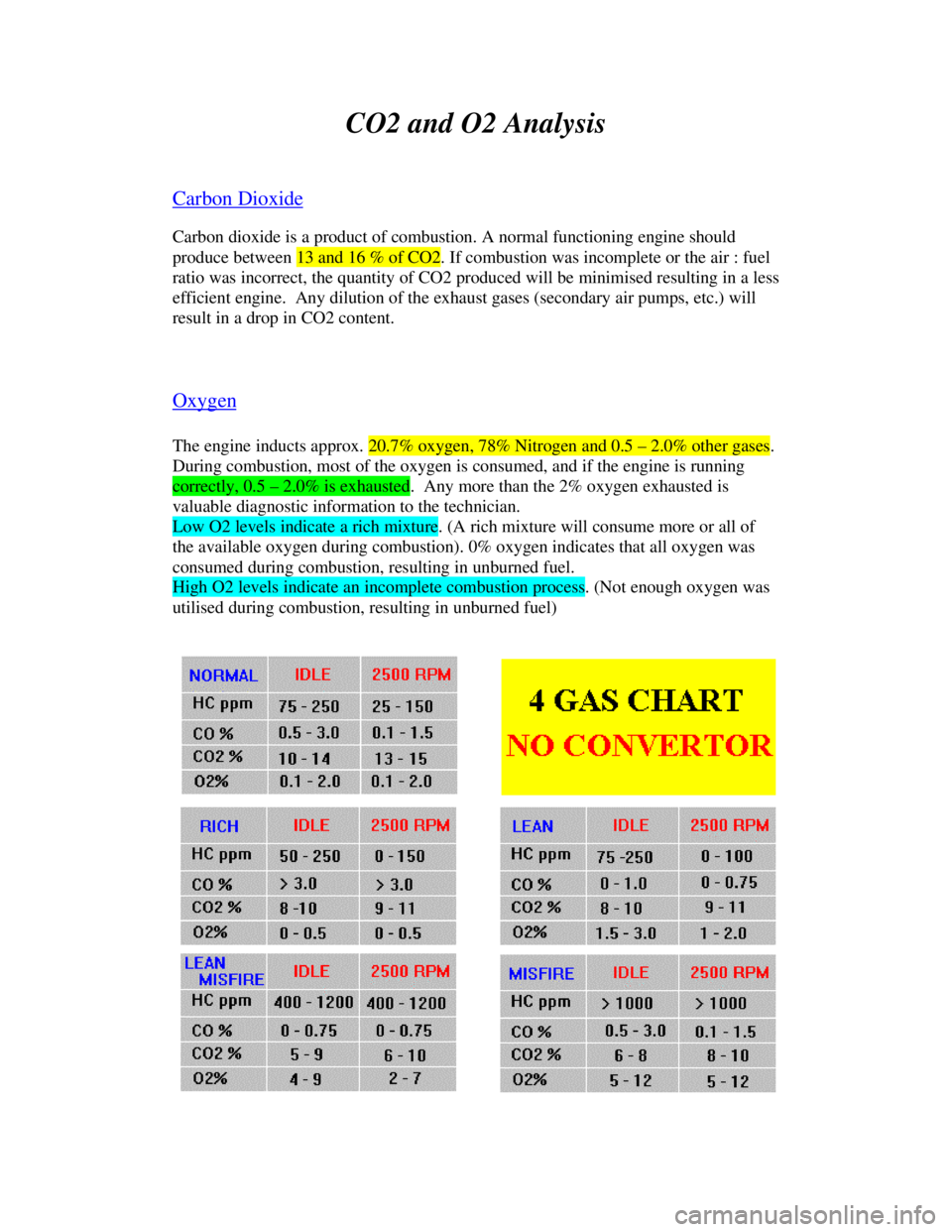
Downloaded from www.Manualslib.com manuals search engine CO2 and O2 Analysis
Carbon DioxideCarbon dioxide is a product of combustion. A normal functioning engine should
produce between 13 and 16 % of CO2. If combustion was incomplete or the air : fuel
ratio was incorrect, the quantity of CO2 produced will be minimised resulting in a less
efficient engine. Any dilution of the exhaust gases (secondary air pumps, etc.) will
result in a drop in CO2 content.
OxygenThe engine inducts approx. 20.7% oxygen, 78% Nitrogen and 0.5 – 2.0% other gases.
During combustion, most of the oxygen is consumed, and if the engine is runningcorrectly, 0.5 – 2.0% is exhausted. Any more than the 2% oxygen exhausted is
valuable diagnostic information to the technician.Low O2 levels indicate a rich mixture. (A rich mixture will consume more or all of
the available oxygen during combustion). 0% oxygen indicates that all oxygen was
consumed during combustion, resulting in unburned fuel.High O2 levels indicate an incomplete combustion process. (Not enough oxygen was
utilised during combustion, resulting in unburned fuel)
Page 1029 of 1070
Downloaded from www.Manualslib.com manuals search engine Diagnostics
ConditionPossible Cause
(Conventional and Electronic Management Systems)
Page 1030 of 1070
Downloaded from www.Manualslib.com manuals search engine
Trending: ECO mode, oil, coolant, oil temperature, fuel type, torque, clutch
